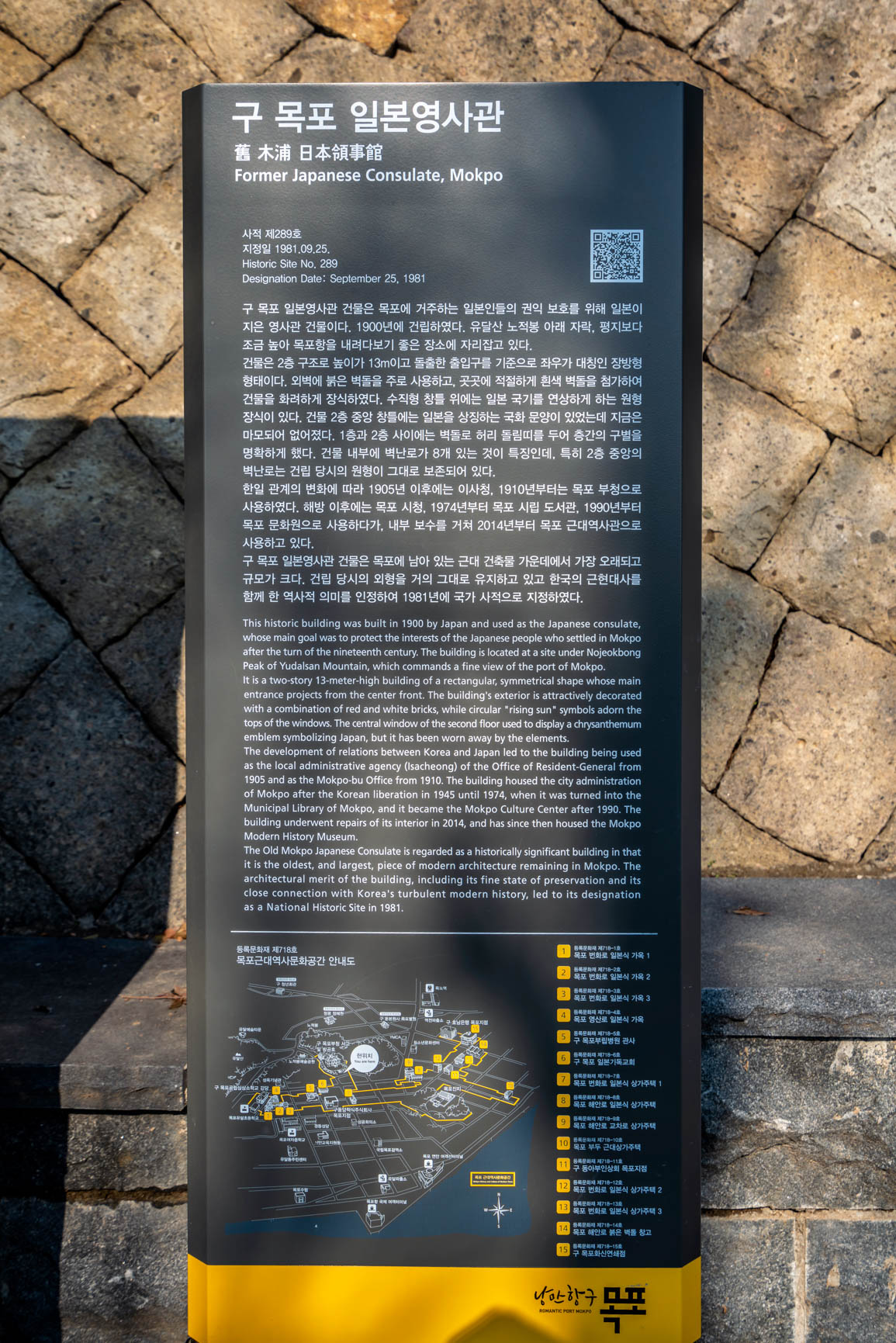Text:Heritage:D00-0289-0000
목차
국문 해설문
현장 안내판 해설문 내용 - 국문
문화재청 국가문화유산포털 해설문 - 국문
조선 광무4년(1900)에 건립되어 1907년까지 일본 영사관으로 사용되었다. 이후 1914년부터 목포부청사, 1974년부터 목포시립도서관, 1990년부터 2009년까지 목포 문화원으로 사용되었다.
해안에서 1㎞ 가량 떨어진 유달산 기슭에 위치하며, 붉은 벽돌을 이용한 2층의 르네상스 양식 건물이다. 건물 평면은 장방형으로 중앙 바깥쪽으로 현관을 두었고, 내부 바닥을 나무로 구성하였으며, 우진각 지붕으로 이루어졌다. 대리석으로 치장한 벽난로와 당시 사용하던 거울 등이 원형 그대로 잘 남아있다.
일제 침략의 현장으로서 역사적 교훈을 주는 교육의 장으로 보존가치가 있다.
영문 해설문
현장 안내판 해설문 내용 - 영문
Former Japanese Consulate, Mokpo
Historic Site No. 289
Designation Date: September 25, 1981
This historic building was built in 1900 by Japan and used as the Japanese consulate, whose main goal was to protect the interests of the Japanese people who settled in Mokpo at the turn of the nineteenth century. The building is located as a site under Nojeokbong Peak of Yudalsan Mountain, which commands a fine view of the port of Mokpo.
It is a two-story 13-meter-high building of a rectangular, symmetrical shape whose main entrance projects from the center front. The building’s exterior is attractively decorated with a combination of red and white bricks, while circular “rising sun” symbols adorn the tops of the windows. The central window of the second floor used to display a chrysanthemum emblem symbolizing Japan, but it has been worn away by the elements.
The development of relations between Korea and Japan led to the building being used as the local administrative agency (Isacheon) of the Office of Residence-General from 1905 and as the Mokpo-bu Office from 1910. The building housed the city administration of Mokpo after the Korean liberation in 1945 until 1974, when it was turned into the Municipal Library of Mokpo, and it became the Mokpo Culture Center after 1990. The building underwent repairs of its interior in 2014, and has since then housed the Mokpo Modern History Museum.
The Old Mokpo Japanese Consulate is regarded as a historically significant building in that it is the oldest, and largest, piece of modern architecture remaining in Mokpo. The architectural merit of the building, including its fine state of preservation and its close connection with Korea’s turbulent modern history, led to its designation as a National Historic Site in 1981.
